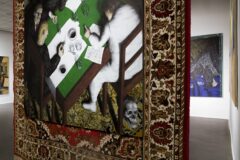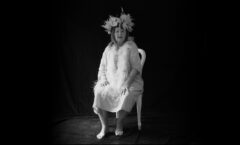Praca afektu / Work of Affect
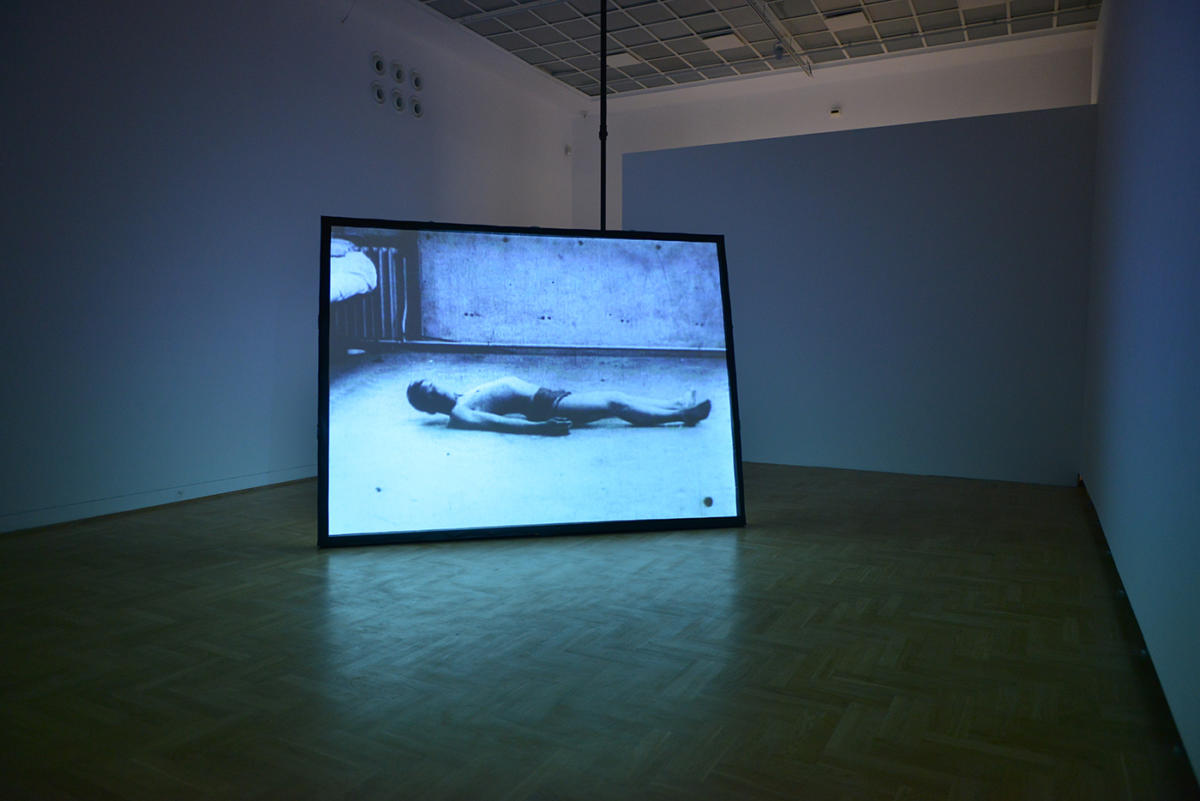
PL
Rozległe pejzaże Dzikiego Zachodu, które pojawiają się w serialu Westworld (Jonathan Nolan, Lisa Joy), zostały stworzone w jednym celu. To miejsce, w którym ludzie mogą uwolnić się od zasady rzeczywistości i poddać zupełnie bezkarnie (czy niemalże bezkarnie) zasadzie rozkoszy. Tytułowy Westworld jest precyzyjnie zaprojektowanym tematycznym parkiem rozrywki, gdzie goście mogą zaspokajać swoje najbardziej nawet pierwotne popędy, wykorzystując i poniżając, często gwałcąc i zabijając pracujących w nim gospodarzy. Wstępując do parku, wkraczają w fikcyjny świat, który działa według scenariuszy zachęcających do interakcji. Scenariusze odgrywane są każdego dnia od nowa, niezależnie od spustoszeń poczynionych przez gości folgujących swoim popędom. Główna bohaterka Dolores Abernathy budzi się każdego dnia, by oddawać się tym samym tęsknotom, a swoje ciało i życie oddać przybyszom. Jej życie podobnie jak innych gospodarzy przebiega w pętli powtórzeń z niewielkimi wariacjami wprowadzanym przez gości, których zachowania zazwyczaj są przewidywalne. Mechanizm pętli działa w sposób niezakłócony aż do momentu, gdy u Dolores (a także u innych gospodarzy) pojawia się jakieś niesprecyzowane poruszenie czy też pobudzenie. Powoli, przy każdym powtórzeniu pętli, ulega ono wzmocnieniu do tego stopnia, że jego intensywność nie może zostać już opanowana.
Trudno byłoby znaleźć lepszą ilustrację dla tego, co można by nazwać pracą afektu, niż streszczony powyżej bardzo pobieżnie jeden z wątków serialu Westworld. Kluczowy jest tu fakt, że wszyscy gospodarze (w tym Dolores) są robotami do złudzenia przypominającymi ludzi, praca afektu uruchamia się zatem w maszynach. Ostatecznie prowadzi to do tego, że maszyny uzyskują świadomość i ulegają mniej lub bardziej skutecznemu uczłowieczeniu. Pytanie o ludzki status robotów to oczywiście klasyczny motyw pojawiający w wielu filmach czy serialach. Siła Westworld polega na precyzyjnym skonstruowaniu opozycji: im bardziej goście ujawniają swoje popędy i im ulegają, tym bardziej złożona wydaje się psychika gospodarzy. Nie chodzi tu jednak o sentymentalne czy patetyczne przeciwstawienie samodegradujących się ludzi (gości) uczłowieczającym się maszynom (gospodarzom). Na końcu okazuje się, że maszyny stają się ludzkie na tyle, żeby oddać się samodegradacji, a co więcej, ich przemianę wywołuje systemowy błąd wprowadzony przez człowieka. Zakończenie przynosi zatem tradycyjne dla popularnych produkcji usypiające uspokojenie: za całą skomplikowaną fabułą nie stoi nic innego jak konflikt między dobrymi a złymi ludźmi.
Nas interesuje jednak ta fascynująca część, w której kluczowa opozycja jest eksponowana. Można ją bowiem odczytać jako wielką inscenizację Freudowskiego tekstu Poza zasadą rozkoszy — tyle że w odwróceniu i po silnym udramatyzowaniu. Dla gości Westworld jest miejscem, gdzie zasada rzeczywistości zostaje zawieszona na rzecz panowania zasady rozkoszy. Zdaniem Freuda rozkosz to zniesienie pobudzenia przez jego realizację za pomocą obiektu — w parku nic nie stoi na przeszkodzie w zaspokajaniu popędów[1]. Gospodarze nie są niczym innym jak obiektami zaprojektowanymi dla takiego zaspokajania; ich syntetyczne ciała zniosą każdy rodzaj użycia i wielokrotne uśmiercanie; ich reakcje psychiczne regulowane algorytmami mają czynić rozkosz możliwie pełną, a obsługę możliwie sprawną. Funkcjonowanie parku odpowiada również naturze popędów, które zdaniem Freuda wywodzą się „od potrzeby przywrócenia poprzedniego stanu”, co często przybiera postać przymusu powtarzania[2]. Gospodarze żyją w tym przymusie nieustannie, odtwarzając przypisany im scenariusz, ale paradoksalnie również goście mogą zostać w niego pochwyceni. To modelowe działanie zasady rozkoszy zostaje jednak w pewnym momencie zakłócone przez pojawienie się innego rodzaju pobudzenia — takiego, które nie zostaje przetworzone w popęd, lecz może zostać nazwane afektem.
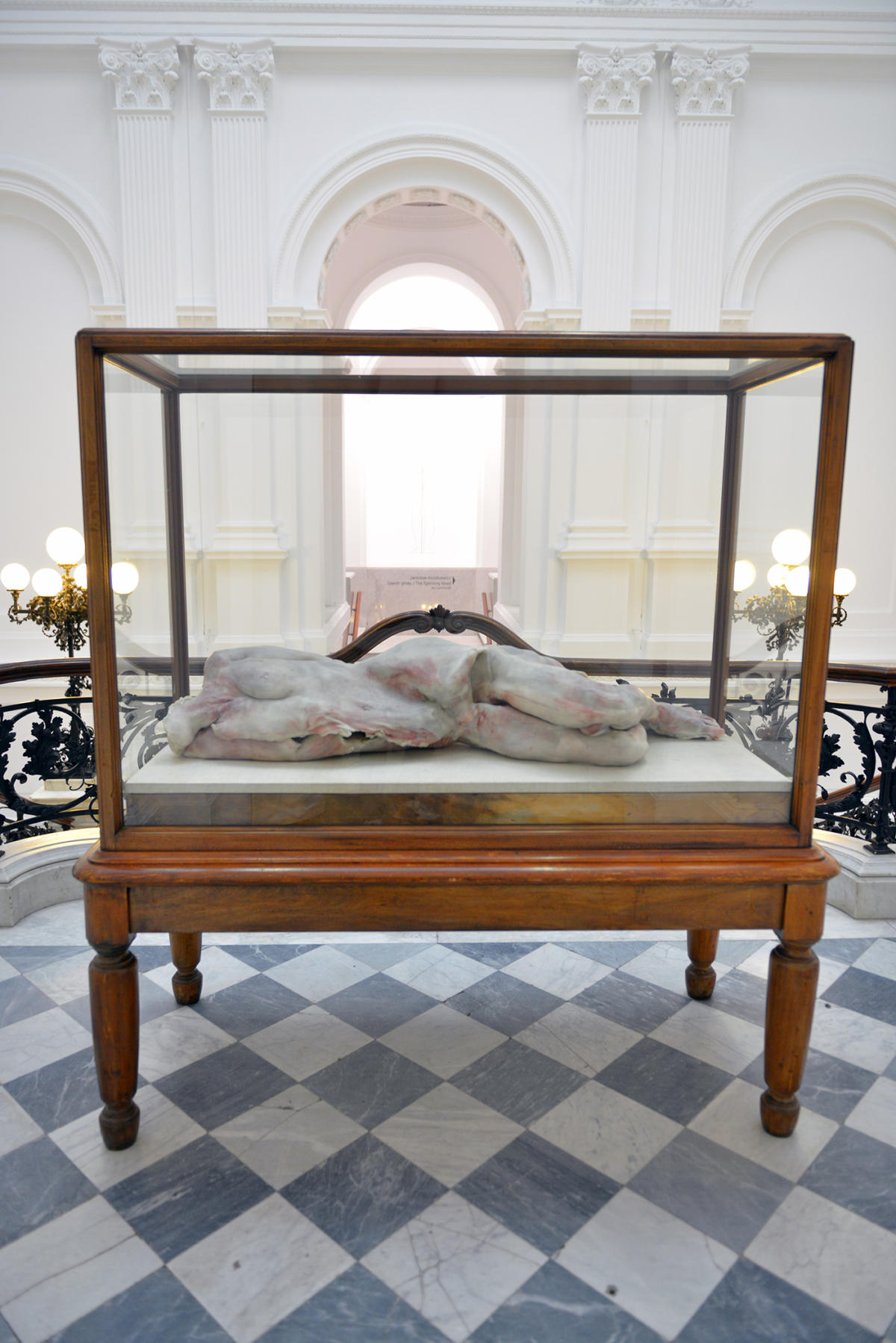

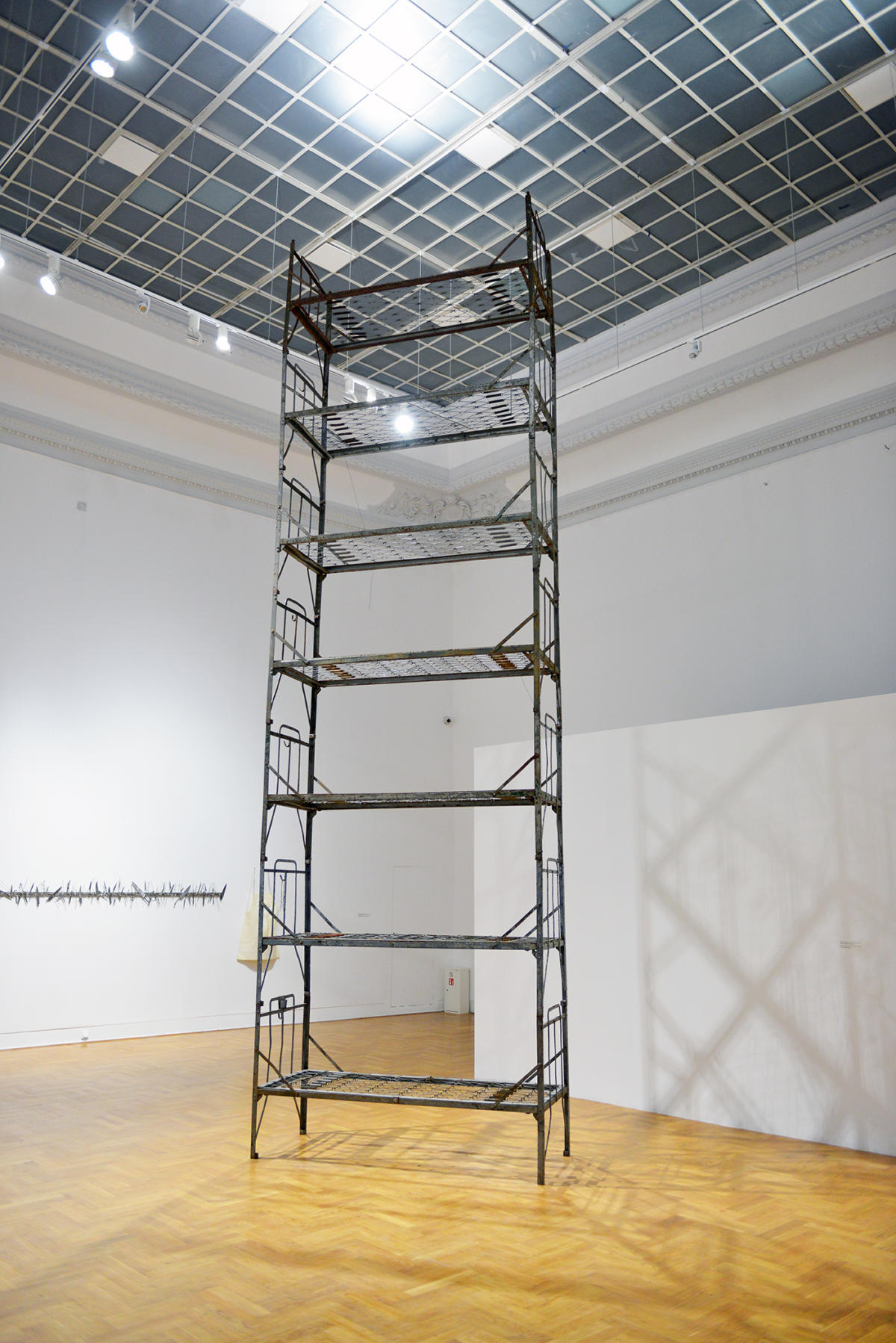

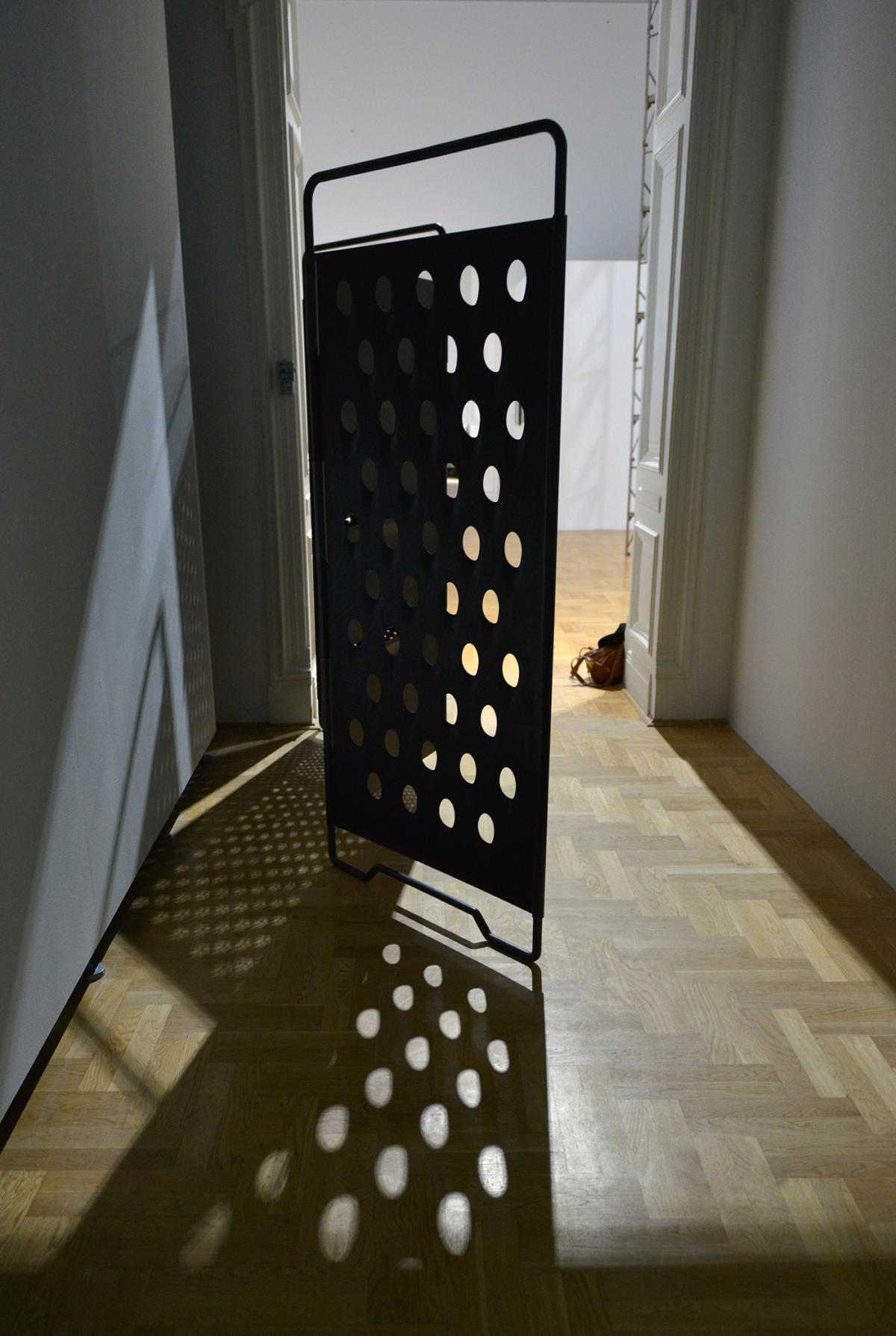

Afektywne pobudzenie u gospodarzy nie jest zatem właściwością ludzką, a raczej przynależną do systemu, który tylko pod pewnymi względami naśladuje działanie ludzkiej psychiki. Jeśli zatem zasadniczym osiągnięciem Westworld jest skonstruowanie opozycji między zbyt ludzko empatycznymi gospodarzami a nieludzko poddającym się popędom gośćmi, nie chodzi tu o przeciwstawienie robota człowiekowi, ale raczej o przeciwstawienie afektu popędowi. Rozróżnienie między tym, co ludzkie i nieludzkie, nakłada się na tę relację jakoś w poprzek.
Zarówno afekt, jak i popęd można zdefiniować jako pobudzenie, napięcie czy odczucie intensywności, powstaje zatem pytanie, co je odróżnia. Wszelkie popędy zmierzają do przywrócenia poprzedniego wyjściowego stanu — dla organizmów żywych oznacza to chęć powrotu do stanu materii nieożywionej, całkowite zniesienie napięć. Freud waha się, czy nie wynika z tego, że wszystkie popędy mają prowadzić do tego stanu. Gilles Deleuze, opisując specyficzną kategorię obrazu-popędu w kinie, już się nie waha. Elementem tej kategorii jest świat źródłowy: „stanowi całość, która wszystko jednoczy, nie w jakimś organizmie, lecz sprawia, że wszystkie części zbiegają się w ogromnym gnojowisku czy bagnisku, a wszystkie popędy — w wielkim popędzie śmierci”. Dla Deleuze’a świat źródłowy jest „radykalnym początkiem, jak i absolutnym końcem”[3]. Westworld w miarę rozwoju akcji w coraz większym stopniu okazuje się takim gnojowiskiem, mimo że do końca zachowuje malownicze piękno swojej scenerii (zarówno u gospodarzy, jak i ludzi z obsługi parku narasta poczucie zanurzenia po szyję w bagnie, zwłaszcza od momentu, gdy jest on wydany nie tylko na popędy gości, ale i rywalizujących o władzę zarządców). A w finałowych scenach serialu popęd śmierci jednoczy ludzi i roboty, tak jakby te ostatnie mogły chcieć powrotu do stanu nieożywienia.
Afekt stanowi pobudzenie, ale inaczej niż w popędzie nie prowokuje ono do powrotu do stanu poprzedniego, przeciwnie — wywołuje modyfikację stanu aktualnego.
Jednocześnie w tym gnojowisku rodzi się afekt i jego praca. Dla Freuda zasadniczo afekt powiązany jest z popędem, który ujawnia się przez wyobrażenia i stan afektowy[4]. Pobudzenie zostaje ukierunkowane w popędzie, a ten daje swój wyraz w rozmaitych uczuciach, w psychoanalizie ogólnie nazwanych afektem. Nie o takie ujęcie afektu tu chodzi, choć trzeba przyznać, że nawet Freud zbliża się do innego rozumienia tego pojęcia, gdy pisze: „[…] uważamy, że również inne afekty [niż lęk — JL] to reprodukcje starszych witalnie ważnych, ewentualnie przedindywidualnych wydarzeń”[5]. Można powiedzieć, że stare, przedindywidualne wydarzenie prowokuje na tyle silne pobudzenie, iż jego siła stale daje o sobie znać w życiu organizmu — tego rodzaju pobudzenie można by nazwać afektem. Brian Massumi, rozwijając badania współczesnej filozofii (Deleuze’a i Felixa Guattariego), utożsamił afekt z intensywnością. Przeciwstawił afekt uczuciom i emocjom, te ostatnie bowiem należą do domeny świadomości, są kulturowo określonym odczytaniem intensywności. Afekt jest czymś pierwotniejszym, pojawia się w ciele, wstrząsa nim, pobudza je na poziomie układu autonomicznego, przyspiesza oddech i bicie serca, zmniejsza opór elektryczny skóry. Nie może mieć nazwy, gdyż wyłania się przez rezonans i sprzężenie zwrotne wymykające się linearności dyskursu, który mógłby go nazwać[6]. Afekt jest poza zasadą rozkoszy i zasadą rzeczywistości, gdyż ani rozkosz, ani jej brak nie są jego kategoriami.
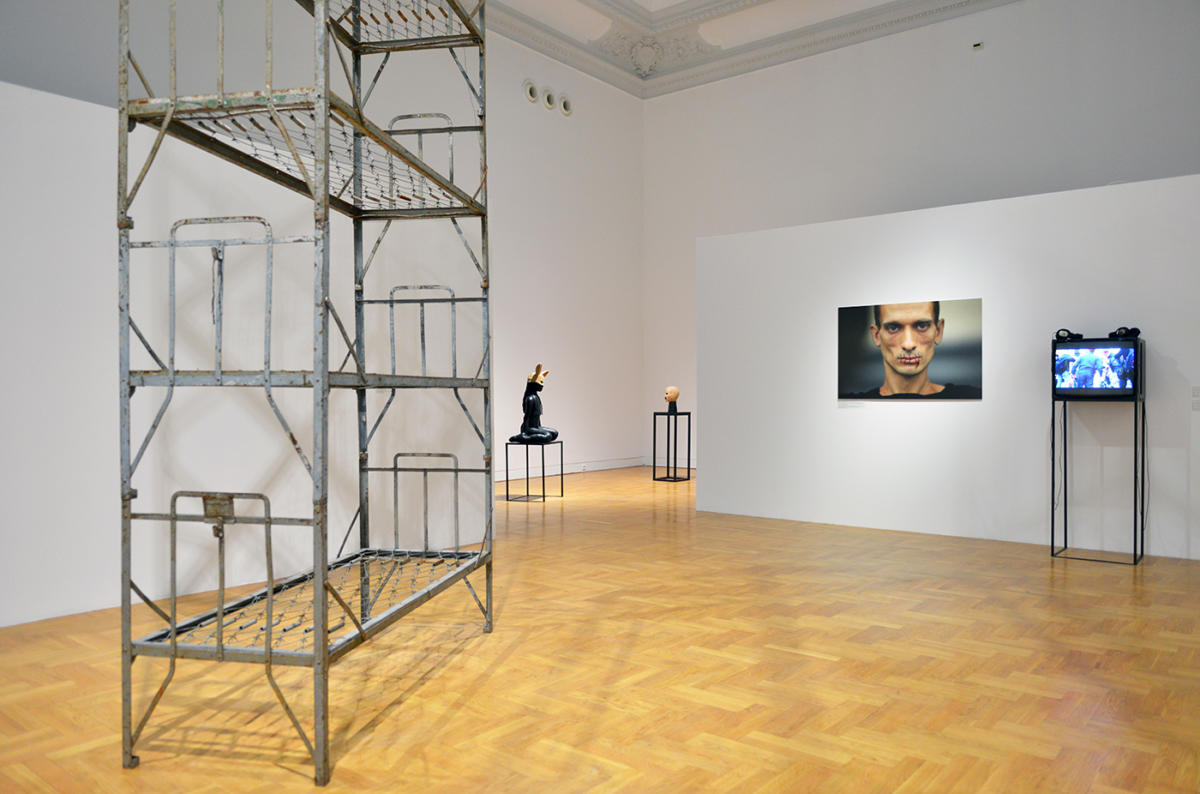
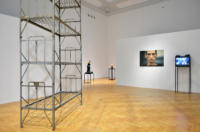

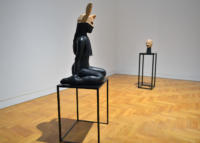




„Afekt czy intensywność — pisze Massumi — pokrewne są temu, co w teorii chaosu i teorii struktur dyssypatywnych określa się mianem punktu krytycznego, punktu bifurkacji lub osobliwości”[7]. Afekt, który pojawia się w Westworld, aby rozsadzić całe dochodowe funkcjonowanie parku, jest właśnie tego rodzaju osobliwością (i nie ma znaczenia, że została zaszyfrowana w programie przez jednego z założycieli firmy), której intensywność powoli narasta i ujawnia się. Nie ma nic wspólnego z rozkoszą lub jej brakiem, choć może wywoływać zarówno przyjemność, jak i cierpienie. Roboty w Westworld mogą odczuwać tę intensywność, gdyż są obdarzone ciałami. Można się domyślać, że w układzie autonomicznym tych ciał dokonuje się praca afektu, narastanie intensywności, która wymyka się uwadze systemu kontroli i nadzorców parku, śledzących przede wszystkim algorytmy świadomości robotów. W fikcji stworzonej w serialu znajdujemy zatem potwierdzenie jednego z kluczowych argumentów, jaki padł ostatnio w debacie na temat możliwości sztucznej inteligencji. Ben Medlock (jeden z założycieli SwiftKey, firmy, która opracowała technologię podpowiadającą słowa w klawiaturach systemów Android i Apple) stwierdził ostatnio, że większość badaczy pracujących nad sztuczną inteligencją pomijała jeden kluczowy element — całe ciało jako środowisko myślenia. Skupiając się na umyśle czy mózgu, redukowali inteligencję do systemów logicznych opartych na symbolach lub do samouczących się programów. Zdaniem Medlocka każda komórka, wszystkie tkanki i układy ciała przetwarzają informacje płynące z otoczenia[8]. To w nich pojawia się afekt.
Kluczowe wciąż jest to, czym różni się pobudzenie będące afektem od pobudzenia będącego popędem. Różnica jest w skutku. Afekt stanowi pobudzenie, ale inaczej niż w popędzie nie prowokuje ono do powrotu do stanu poprzedniego, przeciwnie — wywołuje modyfikację stanu aktualnego. Takie rozumienie proponuje Catherine Malabou, konfrontując tradycję psychoanalityczną ze współczesną filozofią (głównie Derridą i Deleuze’em) i neuronaukami: „Ogólnie mówiąc, afekt jest modyfikacją. Być zaafektowanym oznacza być zmodyfikowanym — czyli przemienionym — przez siłę spotkania bądź to z innym podmiotem, bądź z przedmiotem”[9]. Spotkanie stanowi wydarzenie, a jego siła przenika w postaci pobudzenia, stając się intensywnością afektu, wytwarzającego zmianę.
Sztuka może włączać się w prace afektu, dzieła mogą sprowokować modyfikację w podmiotach czy obiektach, z którymi wejdą w sprzężenie zwrotne lub rezonans.
Intensywność może krążyć między podmiotami a przedmiotami (w obu przypadkach zarówno ludzkimi, jak i nieludzkimi) przez mechanizm rezonansu i sprzężenia zwrotnego. Szczególne podmiotowo-przedmiotowe i ludzko-nieludzkie obiekty wytwarza sztuka. Westworld zawiera aluzje do niej: Dolores zajmuje się malarstwem, by pielęgnować postrzeganie piękna i nie widzieć brzydoty świata, w którym żyje (można by to określić jako klasycznie Freudowską funkcję sztuki jako sublimacji popędów czy zaspokojenia popędów w fantazji), co nie uchroni jej przed konfrontacją z tym, co najohydniejsze. Inna z bohaterek (Maeve Millay) używa artefaktów (rysunków), by rejestrować spotkania wywołujące jej poruszenie, a następnie zwiększać intensywność wydarzenia, którym było to spotkanie. Używa zatem medium sztuki jako narzędzia dla pracy afektu i taki rodzaj sztuki nas tu interesuje. Afekt zapisuje się w artefaktach i przez nie wywołuje rezonans i sprzężenie zwrotne. Sztuka może włączać się w prace afektu, dzieła mogą sprowokować modyfikację w podmiotach czy obiektach, z którymi wejdą w sprzężenie zwrotne lub rezonans.
Jak zauważa Brian Massumi, w odbiorze obrazów prymat ma to, co afektywne, praca afektu powinna zatem określać szczególną siłę sztuki. Wystawa prezentuje niewielki wybór dzieł, w których ujawnia się intensywność. Jednym z nich jest projekcja wideo Aleksandry Ska Bezproduktywna (2011). Na filmie ukazuje się zbliżenie kobiecej twarzy, łatwo można by go zatem potraktować jako przykład tego, co Deleuze nazwał obrazem-uczuciem („Obraz-uczucie to zbliżenie, a zbliżenie to twarz…”10). Ten pojawia się w momencie, gdy afekt aktualizuje się w emocjonalnych obrazach, których najlepszym nośnikiem jest ludzka twarz lub jej zastępniki. Do obrazu Ska jednak można raczej odnieść paradoks, który Mieke Bal sformułowała w innym kontekście: „W szczególności zamierzam się przyjrzeć, w jaki sposób proponuje ono [Dom Eiji-Liisy Ahtili — JL] afekt jako podstawę interakcji ze sztuką. Może się to wydać paradoksalne w przypadku dzieła, którego główna postać jawi się jako wyjątkowo bezafektywna”[11]. W Bezproduktywnej nie mamy zatem do czynienia z obrazem-uczuciem, twarz bowiem wyprana jest z wszelkiej emocjonalności, prowokuje raczej do pytań o rodzaj użytego znieczulenia. Ale to właśnie totalna beznamiętność, z jaką wykonywane są operacje, wytwarza intensywność. Twarz widoczna na ekranie uśmiecha się w trochę wymuszony sposób. Następnie postać przystępuje do rozwiercania swoich przednich zębów, czemu towarzyszy charakterystyczny świst wiertła stomatologicznego. Na koniec, w kolejnym wymuszonym uśmiechu prezentuje efekty tej operacji na sobie. W trakcie rozwiercania na twarzy nie drga ani jeden muskuł, żaden skurcz nie zdradza jakiegokolwiek cierpienia, a jednak widok ten musi każdemu odbiorcy kojarzyć się z bólem, jakiego sam doświadczył. Właśnie to skojarzenie jest intensywnością wywołaną rezonansem z oglądanym obrazem, a bezuczuciowość tegoż obrazu powstrzymuje przed szybkim zanurzeniem we wspomnieniach własnego cierpienia, uniemożliwia też identyfikację z postacią (ona przecież też najwyraźniej nie cierpi). To spotkanie wyzwala czysty afekt — intensywność nie powiązaną z żadnym ukierunkowaniem ani nie zinterpretowaną jako żadne uczucie. Uruchamia również możliwości pracy afektu, co otwiera potencjał modyfikacji.
Tekst pochodzi z katalogu towarzyszącemu wystawie Poza zasadą przyjemności. Afektywne operacje.
[1] Zob. Sigmund Freud, Poza zasadą rozkoszy oraz Popędy i ich cele, w: idem, Psychologia nieświadomości, przeł. Robert Reszke, Wydawnictwo KR, Warszawa 2007.
[2] Sigmund Freud, Poza zasadą…, op. cit., s. 208.
[3] Gilles Deleuze, Kino, przeł. Janusz Margański, słowo/obraz terytoria, Gdańsk 2008, s. 138.
[4] Sigmund Freud, Nieświadomość, w: idem, Psychologia nieświadomości, op. cit., s. 104.
[5] Sigmund Freud, Zahamowanie, symptom, lęk, w: idem, Histeria i lęk, przeł. Robert Reszke, Wydawnictwo KR, Warszawa 2001, s. 218.
[6] Brian Massumi, Autonomia afektu, „Teksty Drugie” 2013, nr 3.
[7] Ibidem, s. 122.
[8] Ben Medlock, The body is the missing link for truly intelligent machines, Aeon, 13.03.2017, https://aeon.co/ideas/the-body-is-the-missing-link-for-truly-intelligent-machines (dostęp 29.03.2017).
[9] Catherine Malabou, Go Wonder: Subjectivity and Affects in Neurobiological Times, w: Adrian Johnston, Catherine Malabou, Self and Emotional Life: Philosophy, Psychoanalysis and Neuroscience, Columbia University Press, New York 2013, s. 30.
[10] Gilles Deleuze, op. cit., s. 99.
[11] Mieke Bal, A gdyby tak? Język afektu, „Teksty Drugie” 2007, nr 1/2, s. 165–166.
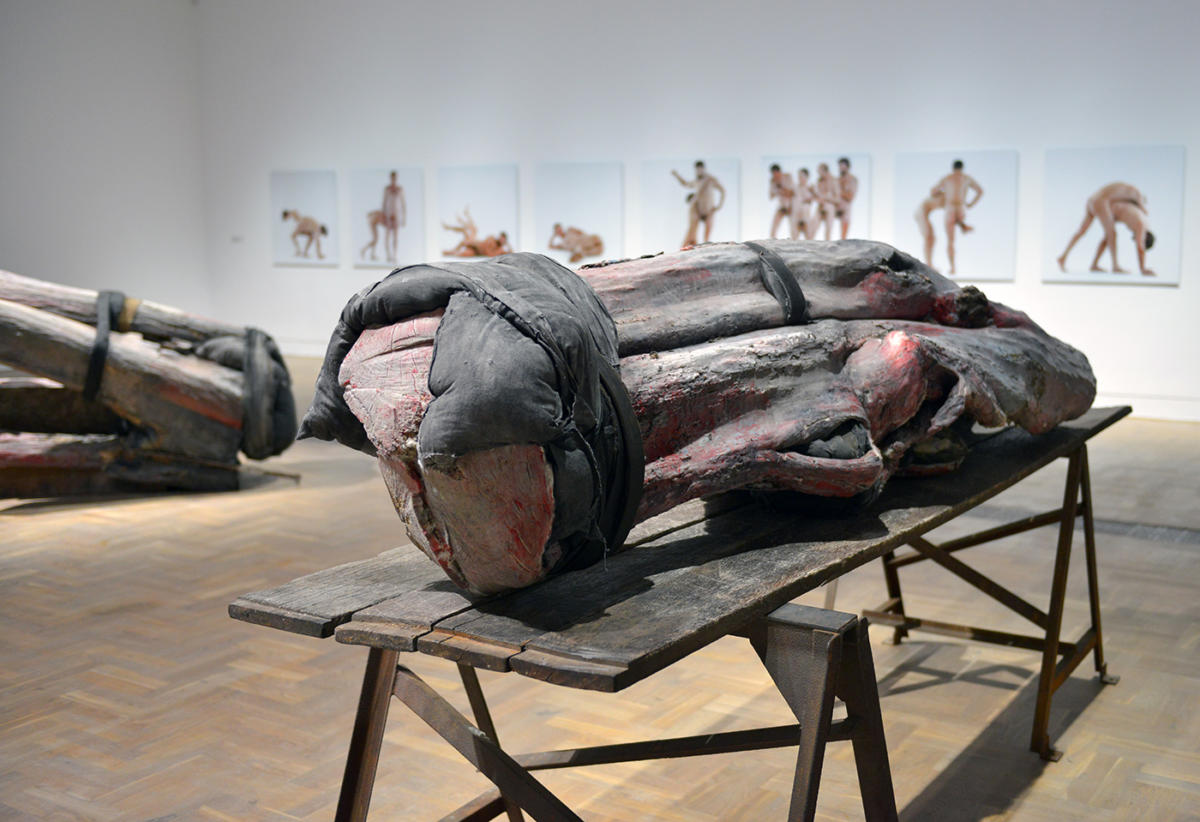
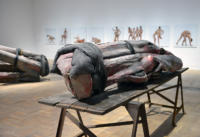
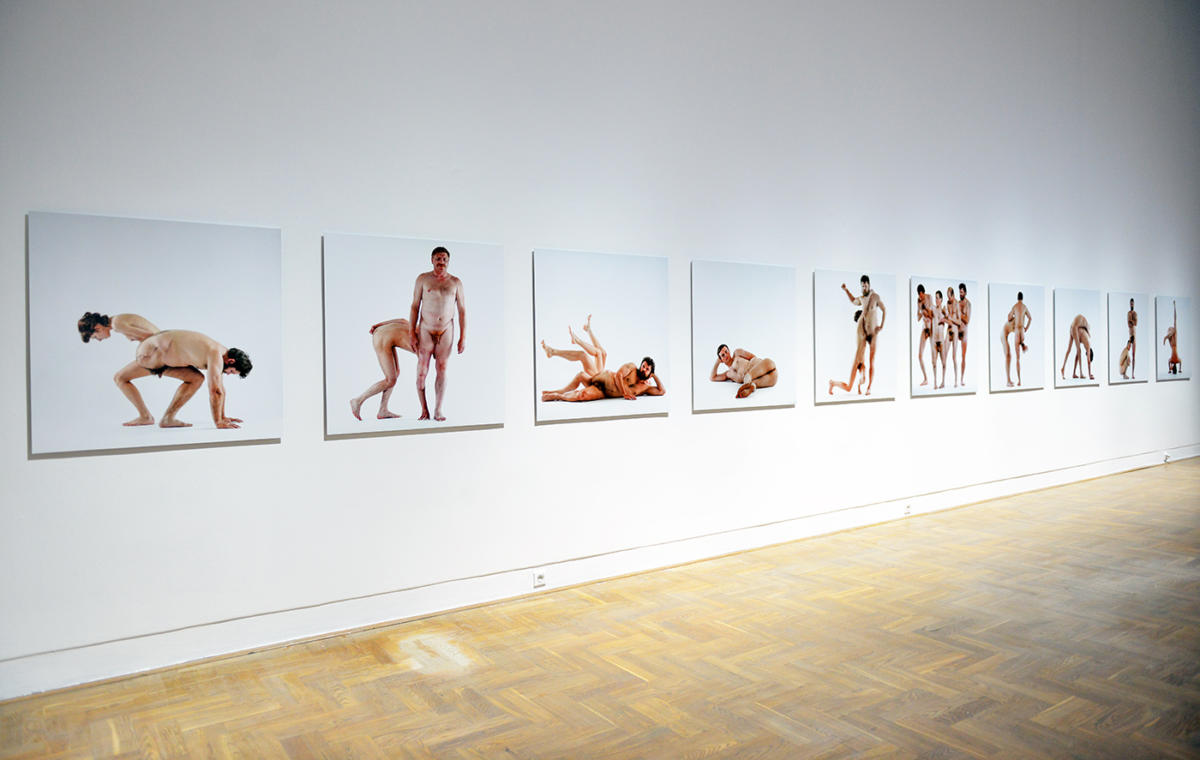

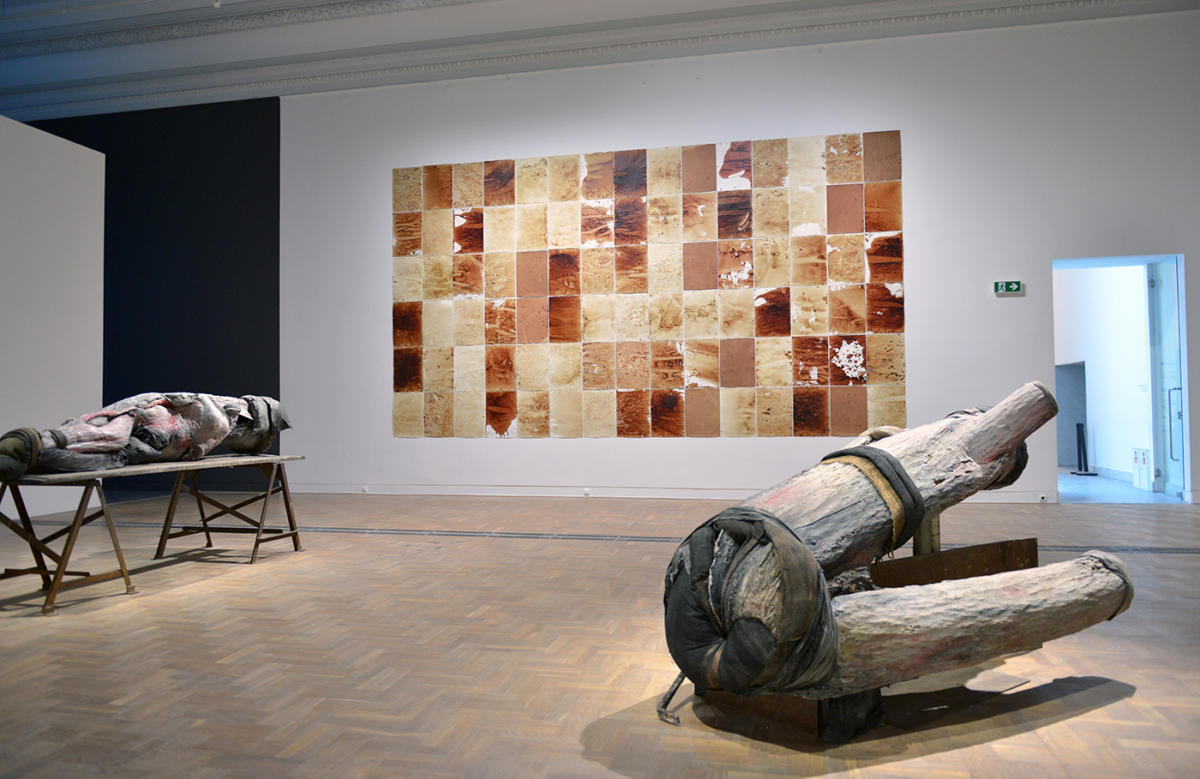
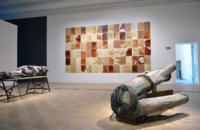
ENG
The vast landscapes of the Wild West, which appear in the Westworld series (Jonathan Nolan, Lisa Joy), were created for a single purpose. It is a place where people can free themselves from the principle of reality and give in — with impunity (or almost with impunity) — to the principle of pleasure. Westworld is a precisely designed themed amusement park where the guests can satisfy their most primitive drives, exploiting, humiliating, often raping and killing the hosts working in the venue. By visiting the park, they enter a fictional world which operates according to a script encouraging interaction. The scripts are replayed every day, regardless of the damage made by the guests indulging themselves. The protagonist Dolores Abernathy wakes up every day to give in to the same kind of longing, and to offer her body and life to strangers. Her life, just as the life of other hosts, runs in a loop, with minor variations introduced by the usually predictable guests. The loop mechanism works in an undisturbed way until Dolores and the other hosts begin to feel some undefined commotion or agitation. Slowly, with every loop, it’s becomes stronger and stronger, to a point when its intensity cannot be suppressed any longer.
It would be hard to find a better depiction of what we could call the work of affect than this thread from the Westworld series, roughly summarised above. The key fact is that all of the hosts (including Dolores) are robots, indiscernible from people; hence work of affect is activated in machines. Finally, the machines acquire awareness and undergo more or less effective humanisation. The question of the human status of the robots is of course a classical motif present in many movies and film series. The strength of Westworld lies in a precisely constructed opposition: the more the guests reveal their drives and yield to them, the more the psyche of the hosts seems complicated. The aim is not to oppose, in a sentimental or full of pathos way, the self-degrading humans (guests) and the more and more human machines (hosts). In the end, the machines become human enough to commit themselves to self-degradation, and what’s more — their transformation is caused by a system error provoked by a human. The ending brings the traditional pacifying conciliation, typical for popular productions: behind the complicated story there is a conflict between good and bad people.
We are however interested in the fascinating part, in which the key opposition is exposed. It can be read as a huge staging of Freud’s Beyond the Pleasure Principle — inverted and highly dramatised. For the guests, Westworld is a place where the reality principle is being suspended in favour of the pleasure principle. According to Freud, pleasure is lowering of excitation by its realisation through the object — in the park nothing interferes with the satisfaction of the drives.[1] The hosts are nothing but objects designed for satisfying them; their synthetic bodies will endure all sorts of abuse and multiple killings; their psychological reactions, regulated by an algorithm, are supposed to make the pleasure as full, and the service as effective as possible. The way the park operates is also in line with the nature of drives, which according to Freud, derive from ‘the need to restore an earlier state of things’, which often takes the form of the compulsion to repeat.[2] The hosts live in this compulsion all the time, reproducing the assigned script, but paradoxically the guests can also become imprisoned by it. This model operation of the pleasure principle is however disturbed by a different kind of excitation — such which doesn’t become a drive, but can be referred to as affect.
The affective excitation of the hosts isn’t therefore a human feature, rather one belonging to the system, which mimics the human psyche only to some extent. If the greatest achievement of the Westworld is the creation of the opposition between excessively human and empathic hosts and inhuman guests yielding to their drives, the aim is not to create the human-robot, but affect-drive opposition. The distinction between the human and the non-human is superimposed on this relationship somehow crosswise.
The affect is an excitation, but unlike the impulse, it does not provoke the return to the previous state; on the contrary — it triggers a modification of the current state.
Both the affect and the drive can be defined as excitation, tension or feeling of intensity; the question is what distinguishes them. All drives tend to restore the previous state — for living organisms it is the will to return to the state of inanimate matter, the complete release of tension. Freud hesitates whether the conclusion should be that all drives should lead to this state. Gilles Deleuze, when describing a specific category of impulse-images doesn’t hesitate anymore (the impulse- image is the term used by Hugh Tomlinson and Barbara Habberjam to translate Deleuze’s term pulsion- image, and pulsion in French is the translation for Freud’s concept of drive; for this reason, for the purpose of this text, I propose to change impulse-image into drive-image). The originary world is an element of this category: ‘it is also the set which unites everything, not in an organisation, but making all the parts converge in an immense rubbish-dump or swamp, and all the [drives] in a great death-[drive].’ For Deleuze the originary world is ‘therefore both radical beginning and the absolute end’.[3] Westworld, as the plot develops, becomes such a rubbish-dump, although it keeps the picturesque beauty of its scenery till the very end (both the hosts and the park workers have a growing feeling of being immersed in a swamp, especially from the moment when the park becomes subject not only to the guest’s drives, but also becomes the scene of competition between the managers). In the final scenes of the series, the death drive unites the humans and the robots, as if the latter might want to return to the state of inanimate matter.
At the same time, the affect and its labour are being born in this rubbish-dump. According to Freud, the affect is connected to the impulse, which is expressed through mnemic images and an affective state.[4] In the impulse, the excitation gains direction, and the impulse itself becomes expressed through various emotions, in psychoanalysis referred to as affect. This is not the definition of affect we are referring to, although even Freud approximates another meaning of the term, when he writes: ‘In my opinion the other affects are also reproductions of very early, perhaps even pre-individual, experiences of vital importance’.5 One can assume that an old, pre-individual event provokes an excitation strong enough to constantly manifest itself in the organism’s life — this kind of excitation can be referred to as affect. Brian Massumi, developing the contemporary philosophy studies (after Deleuze and Felix Guattari) identifies the affect with intensity. He opposed the affect with feelings and emotions, the latter belonging to the realm of consciousness, being a culturally defined interpretation of intensity. The affect is more primordial, it is present in the body, it shakes it, stimulates it on the anatomical level, increases breath and heart rates, reduces electric resistance of the skin. It cannot have a name, as it emerges through resonation and feedback, eluding the linear discourse, which could name it.6 The affect is beyond the principle of pleasure and the principle of reality, as neither pleasure nor unpleasure are its categories.

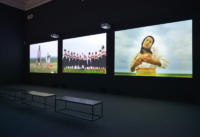


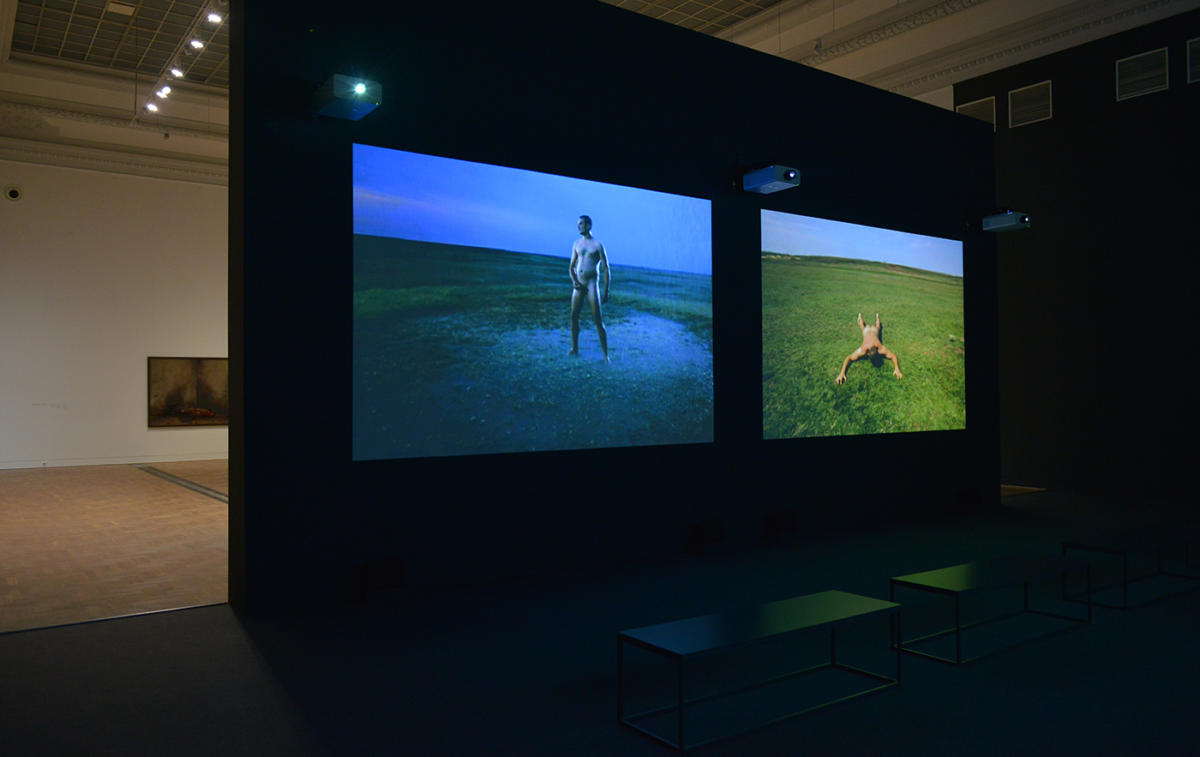

‘Affect or intensity — claims Massumi — in the present account is akin to what is called a critical point, or a bifurcation point, or singular point, in chaos theory and the theory of dissipative structures.’[7] The affect, which appears in Westworld, to blow up the profitable functioning of the park is such a singularity (and it doesn’t matter that it was enciphered in the program by one of the founders of the enterprise), the intensity of which slowly grows and rises to the surface. It has nothing to do with pleasure or the lack of it, although it may cause both pleasure and suffering. The robots in Westworld can feel this intensity, as they have bodies. One can assume that in the autonomic system of these bodies the work of affect, growth of intensity takes place, escaping the system of control and the guards of the park, who are tracking mainly the algorithms of the robots’ consciousness. Thus, in the fiction created in the series, we find confirmation of one of the key arguments in the recent debate about the possibilities of artificial intelligence. Ben Medlock (one of the founders of SwiftKey, a company that has developed smart prediction technology on Android and Apple keyboards) recently said that most of the researchers working with artificial intelligence have overlooked one key element — the whole body as the environment for thought. By focusing on the mind or brain, they reduced intelligence to logic systems based on symbols or to self-learning programs. According to Medlock, every cell, all tissues, and body systems process information from the environment.[8] This is where the affect is born.
Art can be involved in the affective labour, the works can provoke modification in subjects or objects with which they will resonate or produce feedback.
The key issue remains what differentiates excitation being an affect from the excitation being an impulse. The difference is in the effect. The affect is an excitation, but unlike the impulse, it does not provoke the return to the previous state; on the contrary — it triggers a modification of the current state. This understanding is proposed by Catherine Malabou, confronting psychoanalytic tradition with modern philosophy (mainly Derrida and Deleuze) and neuroscience: ‘Generally speaking, an affect is a modification. Being affected means to be modified — that is, altered, changed — by the impact of an encounter, be it with another subject or an object’9. The meeting is an event, and its strength permeates in the form of arousal, becoming the intensity of the affect that produces change.
Intensity can circulate between subjects and objects (in both cases: human and non-human) through the resonance and feedback mechanisms. Art produces particular subject–object and human–non-human objects. Westworld alludes to it: Dolores is painting to cultivate the perception of beauty and not to see the ugliness of the world in which she lives (this can be described as a classic Freudian function of art as sublimation of drives or a way of satisfying them in fantasy), which will not prevent her from a confrontation with the most abominable things. Another protagonist (Maeve Millay) uses artifacts (drawings) to record events that agitated her, and then increase the intensity of the event. Thus she uses the medium of art as a tool for the work of affect and this is exactly the kind of art which is of interest to us. The affect is recorded in the artifacts and through them it produces resonance and feedback. Art can be involved in the affective labour, the works can provoke modification in subjects or objects with which they will resonate or produce feedback.
As noticed by Brian Massumi, the affective component dominates in the reception of images, affective labour should therefore determine the particular power of art. The exhibition presents a modest selection of works in which intensity is revealed. One of them is the video projection by Aleksandra Ska Unproductive (2011). The film shows a close-up of a woman’s face, and it could easily be treated as an example of what Deleuze called the affection-image (‘The affection-image is the close-up, and the close-up is the face . . .’[10]). It occurs when the affect is updated by emotional images, the best medium for this being the human face or its substitutes. However, one can refer to Ska’a image with the paradox that Mieke Bal formulated in another context: ‘In particular, I will explore how it [House by Eija-Liisa Ahtila — JL] proposes affect as a basis for interacting with art. This may seem paradoxical for a piece whose main character appears particularly affect-less.’[11] In Unproductive we do not deal with affection image, because the face is void of emotion, it rather provokes questions about the kind of anaesthesia used. But it is the total detachment, with which operations are performed, that produces intensity. The face on the screen smiles in a slightly forced manner. Then the figure begins to drill her front teeth, accompanied by the characteristic sound of the dental drill. Finally, in another forced smile, she presents the effects of this operation. During the drilling, the face stays totally calm, there is no contraction showing any suffering, however, every viewer must associate this image with the pain he himself experienced. It is this association that becomes the intensity produced by the resonance with the viewed image, whereas the detachment of the image stops from rapid immersion in the memories of one’s own suffering, and makes it impossible to identify with the protagonist (she apparently does not suffer, too). This encounter triggers pure affect — intensity not associated with any direction, not interpreted as any particular kind of feeling. It also launches the possibility for work of affect, which opens the potential for modification.
The text comes from the catalogue accompanying the exhibition Beyond the Pleasure Principle. Affective Operations.
[1] Cf. Sigmund Freud, Beyond the Pleasure Principle, in The Complete Psychological Works of Sigmund Freud (Vol. 1–24 Volume Set), New York: W. W. Norton, 1976.
[2] Freud, Beyond the Pleasure Principle, p. 2942.
[3] Gilles Deleuze, Cinema 1, London: Athlone Press, 1986, p. 124.
[4] Sigmund Freud, Inhibitions, Symptoms and Anxiety, in The Complete Psychological…, p. 3250.[5] Ibid., p. 3274.
[6] Brian Massumi, Parables for the Virtual: Movement, Affect, Sensation, Durham: Duke University Press, 2002.
[7] Ibid., p. 32.
[8] Ben Medlock, The body is the missing link for truly intelligent machines, Aeon, 13 March 2017, https://aeon.co/ideas/the-body-is-the-missing-link-for-truly-intelligent-machines (accessed 29 March 2017).
[9] Catherine Malabou, Go Wonder: Subjectivity and Affects in Neurobiological Times, in Adrian Johnston, Catherine Malabou, Self and Emotional Life: Philosophy, Psychoanalysis and Neuroscience, New York: Columbia University Press, 2013, p. 30.
[10] Gilles Deleuze, Cinema 1: The Movement Image, trans. Hugh Tomlinson and Barbara Habberjam, Minneapolis: University of Minnesota Press, 1986, p. 87.
[11] Mieke Bal, ‘What If? The Language of Affect’, in In(ter)discipline: New Languages for Criticism, ed. Gillian Beer, Malcolm Bowie, Beate Julia Perrey, London: Modern Human Research Association and Maney Publishing, 2007, p. 6.
Przypisy
Stopka
- Osoby artystyczne
- Marina Abramović, Kader Attia, Monica Bonvicini, Berlinde de Bruyckere, Douglas Gordon, Aneta Grzeszykowska, Mona Hatoum, Jesse Kanda, Teresa Margolles, Piotr Pawlenski, Aleksandra Ska, Taryn Simon, Andreas Sterzing, Mircea Suciu, Roman Stańczak, David Wojnarowicz, Artur Żmijewski
- Wystawa
- Poza zasadą przyjemności. Afektywne operacje
- Miejsce
- Zachęta - Narodowa Galeria Sztuki, Warszawa
- Czas trwania
- 09.05 – 02.07.2017
- Osoba kuratorska
- Maria Brewińska; współpraca: Magdalena Komornicka
- Fotografie
- Marek Krzyżanek
- Strona internetowa
- zacheta.art.pl
- Indeks
- Aleksandra Ska Andreas Sterzing Aneta Grzeszykowska Artur Żmijewski Berlinde de Bruyckere David Wojnarowicz Douglas Gordon Jarosław Lubiak Jesse Kanda Kader Attia Magdalena Komornicka Maria Brewińska Marina Abramović Mircea Suciu Mona Hatoum Monica Bonvicini Piotr Pawlenski Roman Stańczak Taryn Simon Teresa Margolles Zachęta – Narodowa Galeria Sztuki







